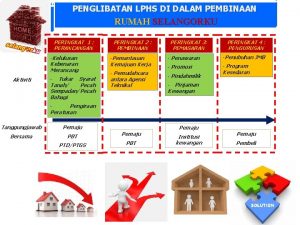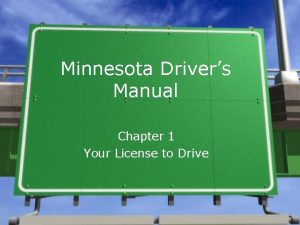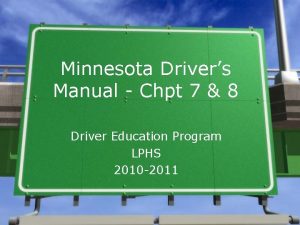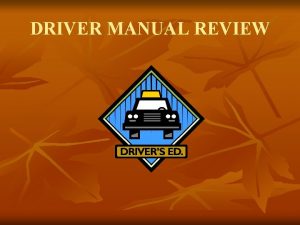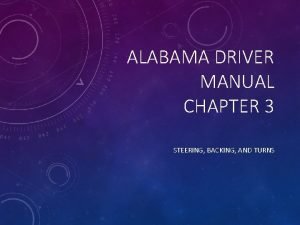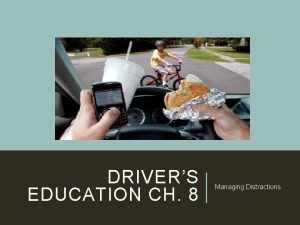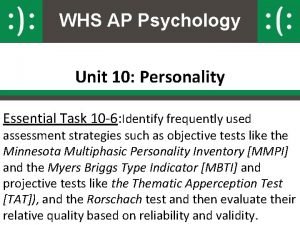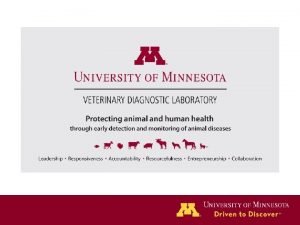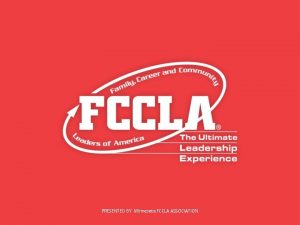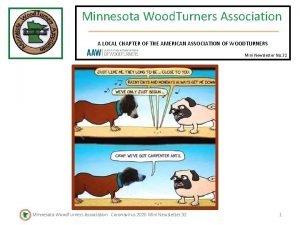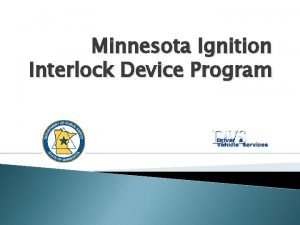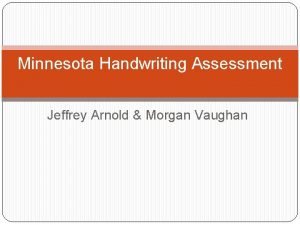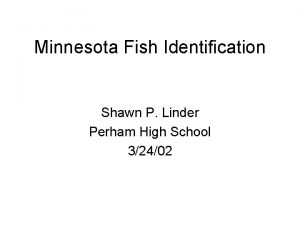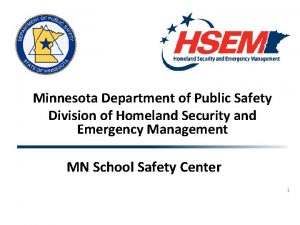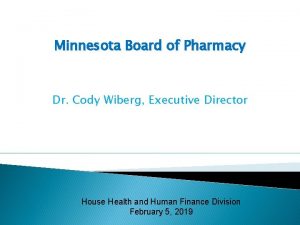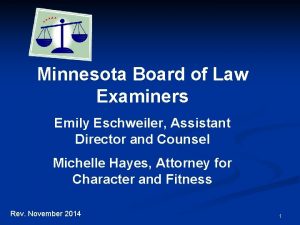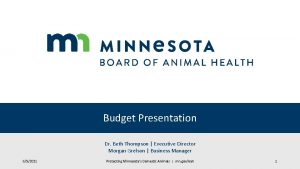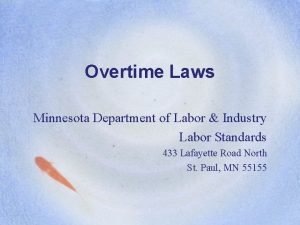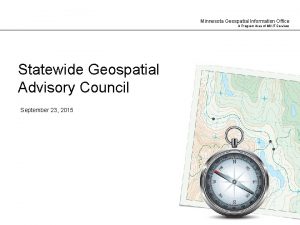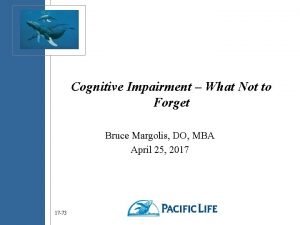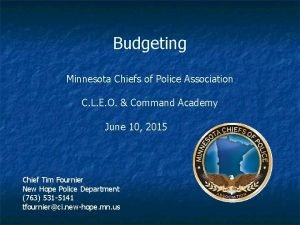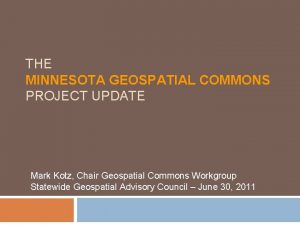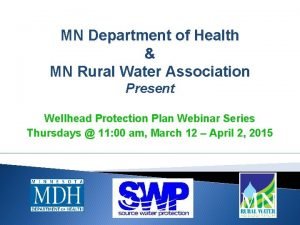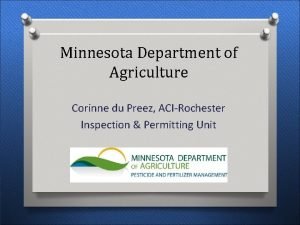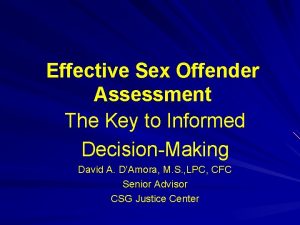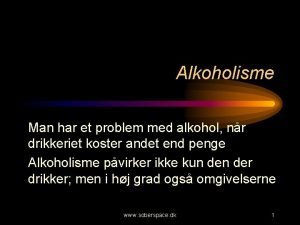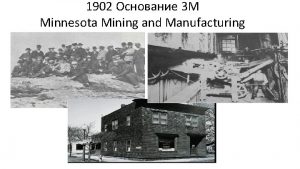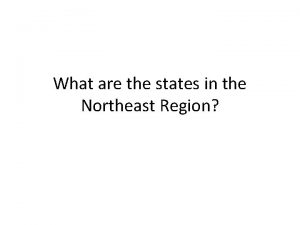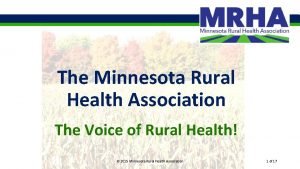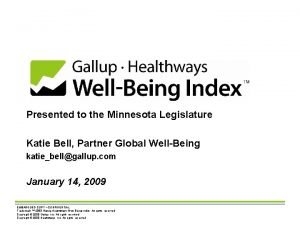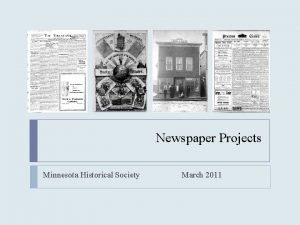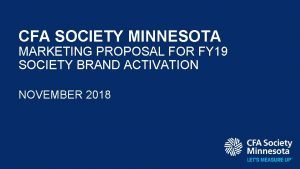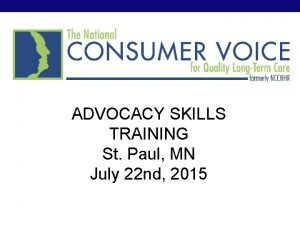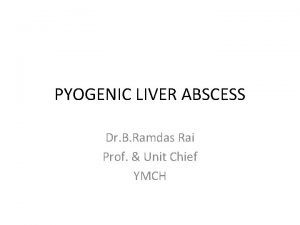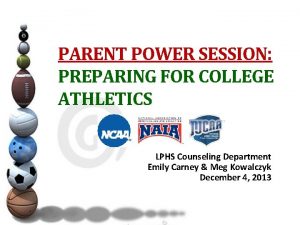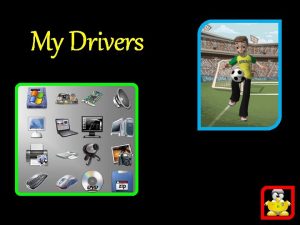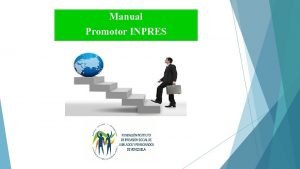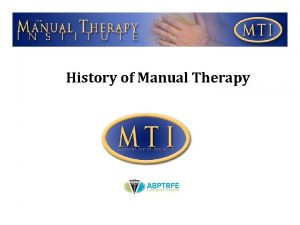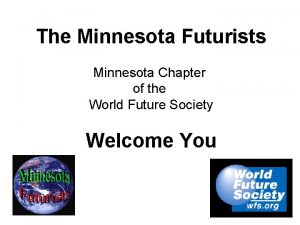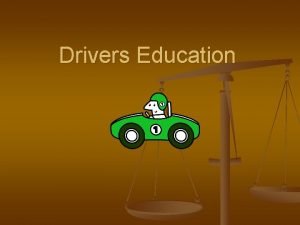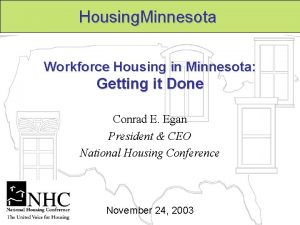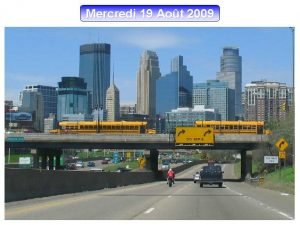Minnesota Drivers Manual Chapter 6 LPHS Drivers Education




















































- Slides: 52

Minnesota Driver’s Manual - Chapter 6 LPHS Driver’s Education Program 2010 -2011

S. I. P. D. E. » A driving strategy that allows you to be more aware of your driving environment and allows you to be better prepared for hazards ahead, behind, and beside you.

S. I. P. D. E. » Scan » Always be looking ahead, behind, and beside you to avoid hazards » 35 mph or less - Scan about 15 seconds ahead » 55 mph or more - Scan 20 -30 seconds ahead

S. I. P. D. E. » Identify » Look for possible hazards » Other vehicles moving into your path » Pedestrians or animals - very unpredictable » Fixed/Stationary objects » Trees, signs, bridges, potholes, etc. » May not cross your path BUT may influence your driving conduct

S. I. P. D. E. » Predict » How will the hazard affect you? » Consider: » Speed, distance, and direction

S. I. P. D. E. » Decide » What do you need to do to avoid the hazard » You are constantly making decisions as you drive » DON’T PANIC

S. I. P. D. E. » Execute » Do whatever you decided to do » Honk your horn and flash lights » Slow down or speed up » Adjust your position or direction » Move to the right » Turn off the road » Hit the ditch

3 Second Rule » When following traffic maintain a safe following distance » The 3 Second Rule » Locate a fixed object on the road side » When the rear bumper of the vehicle in front of you passes this fixed object, start counting: One-One Thousand. One, One-One Thousand-Two, One Thousand-Three

3 Second Rule » If you finish One-One Thousand-Three before the front of your vehicle gets to this fixed object you are following at a safe distance » If you pass the fixed object before finishing the counting, you are too close and need to back off

Stopping Distance » The distance needed to stop you vehicle may also affect your following distance » Stopping distance depends on many factors: » Seeing and recognizing a danger » Perceiving the danger and moving foot to brake (Min. 3/4 second) » Weather conditions » Tire conditions » Brake conditions » SPEED

Night Driving » Darkness = less ability to see dangers » Make sure headlights are working » Windshield is clean » Slow Down

Headlight Usage » If within 1000 feet of an on-coming vehicle or following another vehicle at 200 feet or less, headlights MUST BE ON LOW-BEAM » Headlights must be on from sunset to sunrise

Headlight Usage » Headlights must be on during INCLEMENT weather » Rain, snow, sleet, hail, fog » If your wipers are on, the headlights are on » Headlights must be on ANYTIME you cannot see the road ahead of you, clearly, for a distance of 500 feet

Freeway Driving » Entering the Freeway » Accelerate to at least 50 mph by the bottom of the ramp » Signal left » Check mirrors » Look over left shoulder » Enter nearest lane if open

Freeway Driving

Freeway Ramp Meters

Freeway Speed and Lane Use » Try to stay with traffic flow » NEVER exceed the posted limit » Stay in the right lane if traveling slower than other traffic » If you must change lanes: » SMOG » Maintain speed

Message Signs » Watch for message signs on freeways » Tell drivers about changes in traffic up -ahead » AMBER (America’s Missing: Broadcast Emergency Response) alerts

High Occupancy Vehicle Lanes » HOV lanes » Restricted lanes for use by motorcycles, buses, and vehicles with 2 or more occupants » Watch for time restrictions

Freeway Interchanges » Cloverleaf

Freeway Interchanges » Diamond

Stopping, Parking, & Backing Up » It is ILLEGAL to STOP, PARK, or BACK-UP on an interstate freeway, UNLESS it’s an EMERGENCY » Running out of gas is NOT an emergency

Stopping, Parking, & Backing Up » If you must stop on a freeway » Pull onto the shoulder, AS FAR FROM THE MAIN ROAD AS POSSIBLE » Turn on HAZARD lights/flashers » Open the trunk and Raise the hood » Stay with your vehicle

Stopping, Parking, & Backing Up » Remember to watch for EMERGENCY vehicles, they can back-up on freeways

Emergency Vehicles on Roadways (ALL) » Watch for emergency vehicles stopped on the side of the road with their emergency lights flashing » SLOW DOWN and MOVE TO THE LEFT (if you can)

Getting Off the Freeway » Plan well in advance » S. M. O. G. » Signal » Check your MIRRORS » LOOK over your shoulder » GO if it’s clear

Distracted Driving » Inattention and Distraction are two major leading causes for multiple vehicle crashes » If you are distracted you are less likely to recognize hazards on the road and react more slowly to traffic conditions

Distracted Driving » Avoid: » Adjusting the radio » Talking on the cell phone » Reading » Eating » Putting on make-up » Shaving

Distracted Driving » It is ILLEGAL » To be an inattentive driver » To drive with headphones or earbuds » To text while driving » To talk on the cell phone while driving if you are limited by a provisional license

Obstructed View » It is ILLEGAL: » To have a load in the front seat if the load obstructs your clear view out the windows » To have more than 3 people in the front seat, if the people obstruct your view » To have ANYTHING hanging from your rearview mirror

Projecting Loads » If you are carrying a load that protrudes (sticks out) 4 feet or more from the rear of the vehicle, the load MUST be marked with a red, orange, or yellow flag » At night, the end of the load MUST be marked with a red lantern or light

Projecting Loads » Loads CANNOT extend beyond the left fender » Loads CANNOT extend more than 6 inches beyond the right fender

Campers and Trailers » Read this in the book » You need lots of driving experience and practice before pulling a camper or trailer

Winter Driving » Remove the snow and ice from the hood, lights and windows BEFORE driving » Make sure your windshield washer fluid is full » Adjust you speed to road conditions

Skidding » If you loose traction and the back of your vehicle begins to skid…DO NOT PANIC » Left off the gas pedal » DO NOT slam on the brakes » Turn the steering wheel into the skid until the car starts to straighten out, then turn the wheel straight again

Skidding » If you have Anti-Lock Brakes (ABS), DO NOT pump the brakes. Press down on the brake pedal and continue the steady downward pressure as you steer. » You will feel and hear a strong vibrating sensation from the ABS system…That’s OK it’s supposed to do that

Driving in Rain or Fog » » SLOW DOWN Windshield wipers on Headlights on LOW BEAM Increase your following distance

Hydroplaning » A thin layer of water builds up between the road surface and tire tread » Can occur at any speed » Keep your tires in good shape and reduce speed to reduce chance of hydroplaning

Blow outs » If a tire suddenly blows out DO NOT PANIC » Hold the steering wheel tightly » Steer straight ahead » DO NOT SLAM on the brakes » Let off the gas pedal » Pull off the road at the nearest safe location

Brake Failure » If your brakes fail » DO NOT PANIC » Try pumping the brake pedal » Slowly apply your emergency brake » DO NOT shut your car off - you may loose your steering

Running Off the Roadway » If your tires drift off the roadway » DO NOT PANIC » Let off the gas pedal » Maintain control of your steering » Steer straight ahead until you have control of your vehicle » Turn back onto the pavement and then accelerate

Vehicle Approaching in YOUR LANE » If a vehicle is approaching IN YOUR LANE » DO NOT PANIC » Move to the right » Steer off the road to the right if necessary » DO NOT turn into the left lane

Vehicle Trying to Pass You » Be ready to take action if the vehicle passing you cannot complete the pass » If the passing vehicle is almost into position to pull back into your lane, slow down slightly and let them back in

Vehicle Trying to Pass You » If the passing vehicle can’t complete the pass and must drop back, speed up slightly to make room in your lane for them to move over » If it looks like a crash is going to happen, move right onto the shoulder to get out of the way. DO NOT PANIC

Stalling on RR Tracks » If you can see the train coming: » Get out of your vehicle » Walk quickly in the direction of the train to avoid getting hit by debris » If no train is visible: » Look at the crossing signs for a phone number to call and report » If unsure, call 911 to report

Flooded Roadways » VERY SIMPLY - DO NOT DRIVE THROUGH FLOOD WATERS » Find an alternative road » The road underneath flood waters can be washed out and you can’t see it.

Plunging Under Water » Most vehicles will float for about 30 -60 seconds » Try to roll down your window BEFORE the water level gets to the window » Doors WILL NOT open until the water pressure inside the vehicle is equal to outside the vehicle » Because the engine is heavier, it will sink first. This could create an air pocket in the rear of the passenger compartment

Fire » If you notice smoke coming from your vehicle: » STOP » Get out » Call 911

Overheating » Watch your temperature gauge » If the engine begins to overheat, turn off ALL unnecessary equipment (air conditioning, radio, etc) » If the temp continues to rise, turn ON the HEATER » If you overheat, pull over, stop and shut down the car. Call for help

Headlight Failure » If your headlights suddenly stop working: » Try your parking lights, or hazard lights. They may provide enough light to get you safely off the road » Street lights/business lights may provide enough light to get you off the road safely » If nothing else works, SLOWLY pull off to the side of the road and call for help

Windshield Wiper Failure & Sudden Hood Opening » If your windshield wipers fail: » Slow down » Turn on Hazards » Safely get off the road » If your hood suddenly pops open: » » Slow down Turn on hazards Safely get off the road Look between dashboard and hood or stick your head out your side window to see

Stuck Gas Pedal » Hook the underside of the pedal with your foot and pull back » If this doesn’t work: » » » Apply brakes Shift into Neutral Turn on hazards Safely pull off the road Shut off engine Call for help
 Pangsapuri sekata selangorku
Pangsapuri sekata selangorku Home access center lake park
Home access center lake park Minnesota driving manual
Minnesota driving manual Minnesota driver's manual
Minnesota driver's manual Nj road test parallel parking rules
Nj road test parallel parking rules Alabama drivers license manual
Alabama drivers license manual Push pull method
Push pull method Guide and international signs
Guide and international signs Auditory distraction while driving
Auditory distraction while driving Tat test ap psychology
Tat test ap psychology Minnesota diagnostic lab
Minnesota diagnostic lab Mn dnr biomes
Mn dnr biomes Minnesota ikiz çalışmaları
Minnesota ikiz çalışmaları Fccla
Fccla Mmpi minnesota multiphasic personality inventory
Mmpi minnesota multiphasic personality inventory Arrowhead region mn
Arrowhead region mn Minnesota woodturners
Minnesota woodturners Minneapolis presentation skills
Minneapolis presentation skills Interlock devices minneapolis mn
Interlock devices minneapolis mn Minnesota handwriting assessment
Minnesota handwriting assessment Minnesota fish identification chart
Minnesota fish identification chart Department of homeland security minnesota
Department of homeland security minnesota Cody wiberg
Cody wiberg Emily eschweiler
Emily eschweiler Rebecca mark
Rebecca mark Food deserts in minnesota
Food deserts in minnesota Morgan wright minnesota
Morgan wright minnesota Ihp minnesota
Ihp minnesota Mn overtime laws
Mn overtime laws Minnesota geospatial commons
Minnesota geospatial commons Minnesota cognitive acuity screen
Minnesota cognitive acuity screen Mn chiefs of police association
Mn chiefs of police association University of minnesota surplus
University of minnesota surplus Geospatial commons
Geospatial commons Minnesota geospatial commons
Minnesota geospatial commons Minnesota rural water association
Minnesota rural water association Minnesota geospatial commons
Minnesota geospatial commons Minnesota department of agriculture
Minnesota department of agriculture Minnesota common course catalog
Minnesota common course catalog Minnesota sex offender screening tool
Minnesota sex offender screening tool Direct primary care lincoln ne
Direct primary care lincoln ne Complexity theory
Complexity theory Alkohol problem
Alkohol problem Minnesota mining and manufacturing post-it
Minnesota mining and manufacturing post-it All the states in the northeast region
All the states in the northeast region Mn rural health conference
Mn rural health conference Katie bell minneapolis
Katie bell minneapolis Minnesota historical newspapers
Minnesota historical newspapers Cfa society of mn
Cfa society of mn Presentation skills training st. paul, minnesota
Presentation skills training st. paul, minnesota Blakemore tube
Blakemore tube Meghan flores
Meghan flores Minnesota soil health coalition
Minnesota soil health coalition
